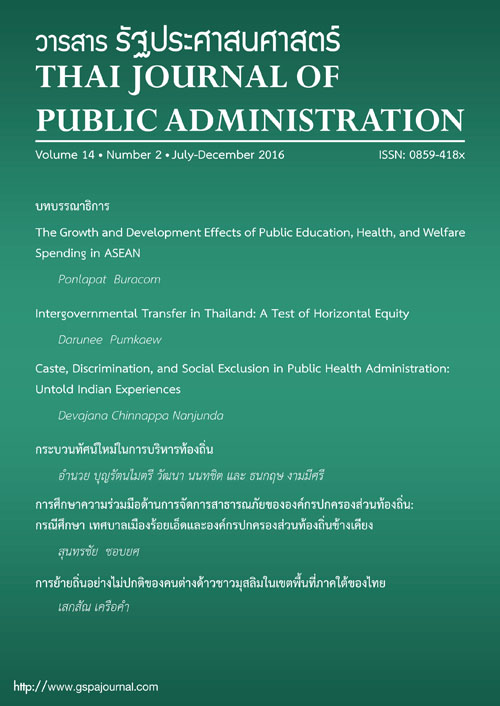Intergovernmental Transfer in Thailand: A Test of Horizontal Equity
Keywords:
Intergovernmental grant, general grant, horizontal fiscal balance, fiscal equlizationAbstract
This article examines fiscal equality of intergovernmental grant allocation by testing a hypothesis on horizontal fiscal balances among local governments. General grants were the main explored variables because they are typically used to fix local government fiscal imbalances. General grants often supplement inadequate local own-source revenues to enhance a local government’s ability to meet expenditure responsibilities. The study investigated horizontal equalization at all local government levels, especially the lower-tier, throughout the country. The units of analysis are provincial administrative organizations, municipalities, and sub-district (tambon) administrative organizations. Data were collected for four fiscal years from 2009 - 2012, based on records from the Department of Local Administration, Ministry of Interior. The findings confirmed the following. 1) General grant allocation did not have an inverse relationship with local government revenue; in other words, general grants were not delivered to a local government with lower tax capacity. 2) Fiscal inequality still remained in local administrative organizations; the disparity of 0.26 before general grant allocation persisted in the local governments, and declined to 0.22, or only a 0.04 reduction, after allocation. 3) Allocation created more fiscal inequality among some types of local administrative organizations, and among some regions. 4) The highest fiscal inequality by types of local administrative organization remained within sub-district municipalities, and in the eastern region.



